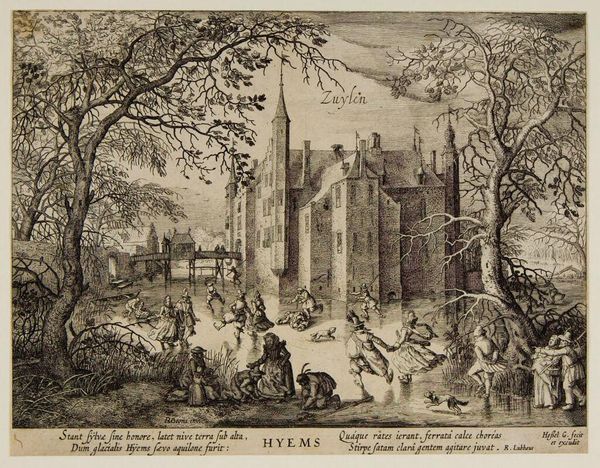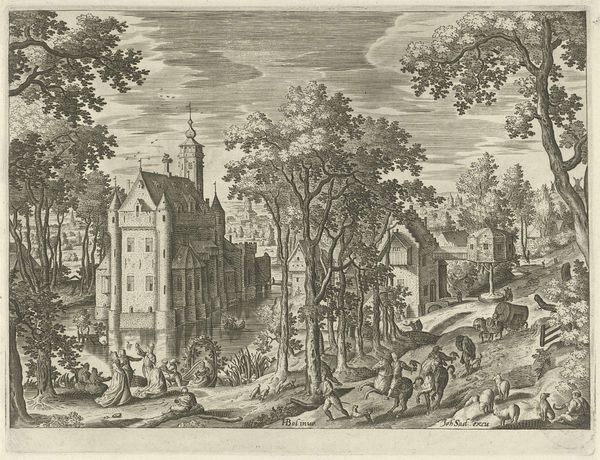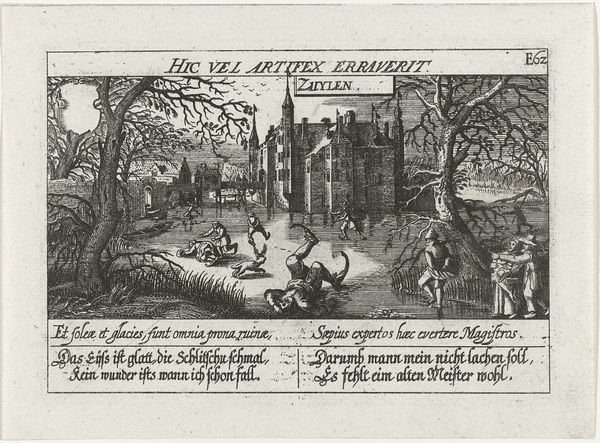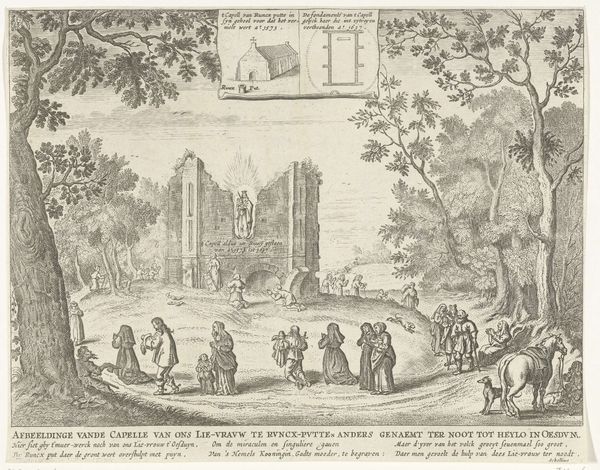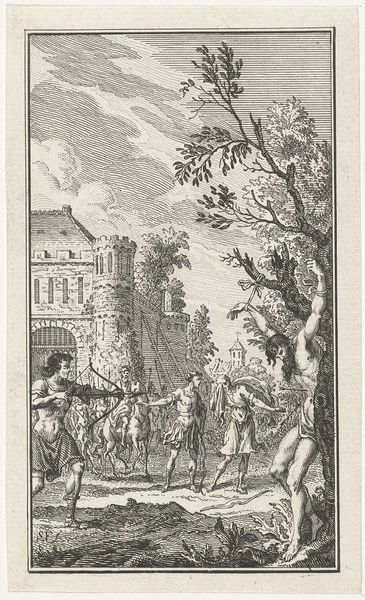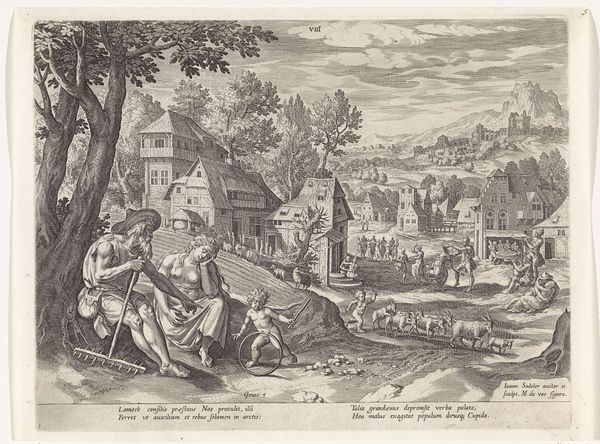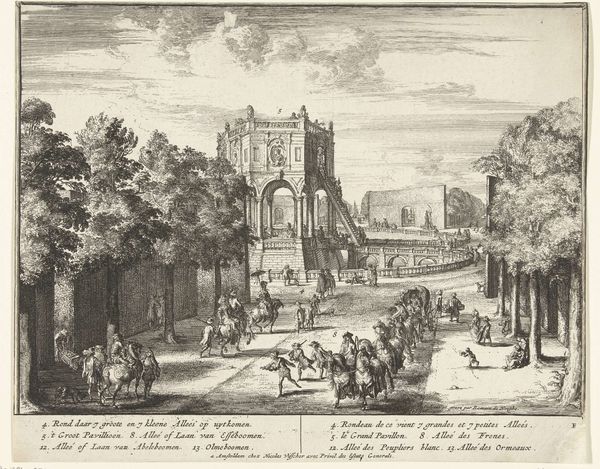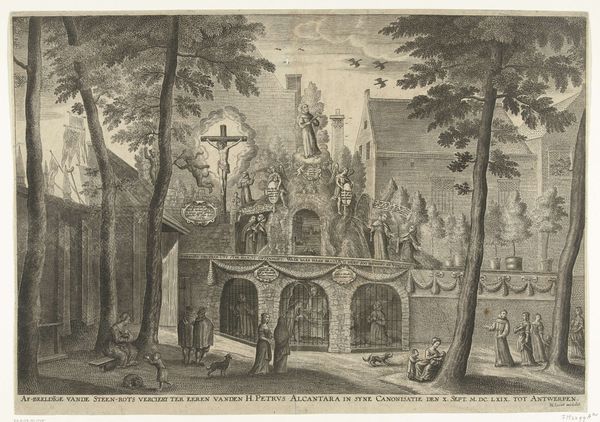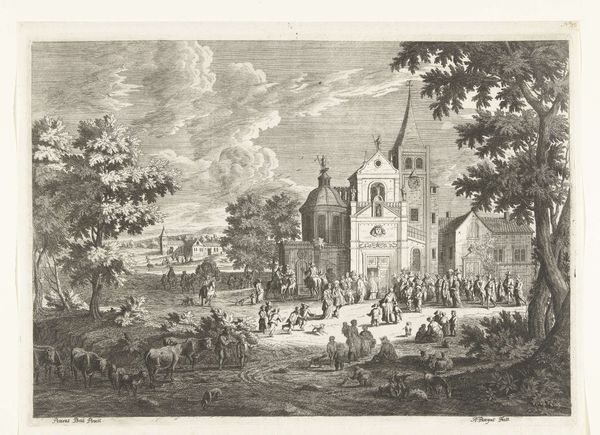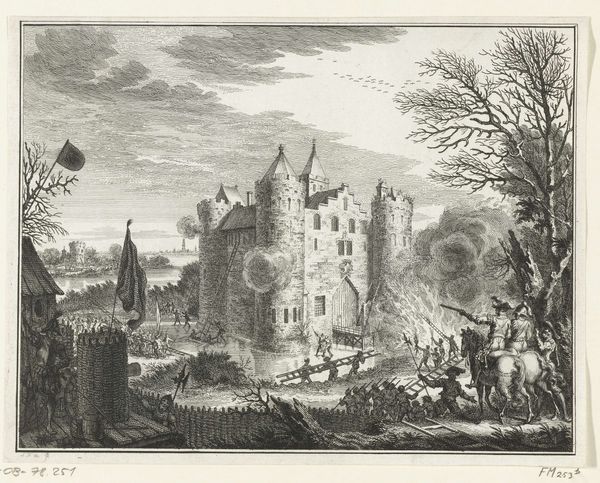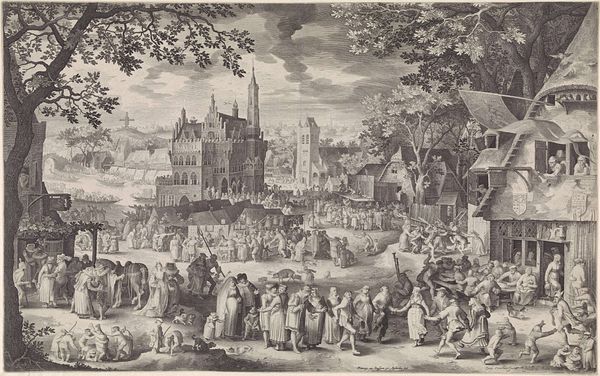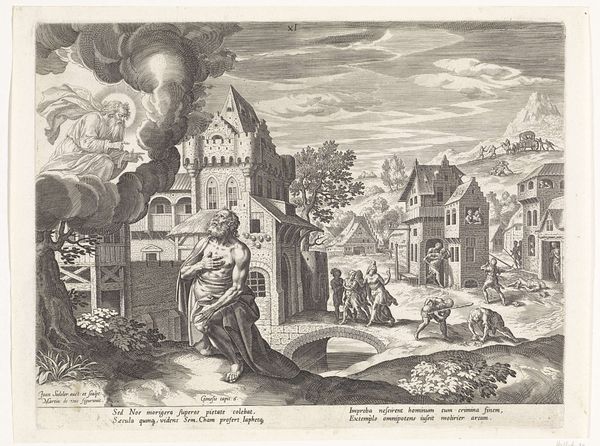
print, engraving
#
dutch-golden-age
# print
#
landscape
#
cityscape
#
genre-painting
#
engraving
Dimensions: height 189 mm, width 245 mm
Copyright: Rijks Museum: Open Domain
Curator: Take a look at “Winter,” created around 1625 by Hessel Gerritsz, a detailed engraving now held in the Rijksmuseum. It depicts a bustling winter scene. Editor: My initial impression is one of controlled chaos. Despite the monochromatic palette, the engraving pulses with a sense of vibrancy and energetic movement across the icy landscape. Curator: Indeed. Gerritsz created this work during a period of intense urbanization and economic expansion in the Dutch Republic. These genre scenes served not just as visual entertainment but also reinforced ideas about communal recreation, albeit with an aristocratic lean. Note the building of "Zuylen" and the well dressed population depicted enjoying ice skating which might serve as a promotion for this town. Editor: Absolutely. The strategic positioning of the key buildings, and the precise rendering of figures interacting showcase his formal understanding of depth and perspective, structuring the space using linear elements. Curator: Precisely, it wasn’t mere decoration. Genre prints like these were pivotal in constructing a shared visual vocabulary. It idealized daily activities within a certain societal class. Moreover, Hessel Gerritsz was primarily known for his cartography. His move to printmaking underscores a broader market for topographical and genre scenes—a reflection of burgeoning civic pride. Editor: Notice how the bare trees elegantly frame the icy pond, serving both an aesthetic purpose and effectively directing the eye. The artist’s adept use of chiaroscuro heightens the tonal contrast, contributing to the dramatic atmosphere of a frigid winter day. Curator: And it subtly comments on power, privilege, and what constitutes idealized public life at the time. These frozen ponds were stages upon which society performed its identity. Editor: Studying "Winter," I'm left pondering how deeply interconnected form is with cultural messaging. Hessel's meticulous technique allows a deceptively straightforward composition to transmit complex ideas about its period. Curator: Yes, exactly. This print is more than a representation. It's a reminder of how art shapes our understanding of both the everyday and the ideals of its era.
Comments
No comments
Be the first to comment and join the conversation on the ultimate creative platform.
